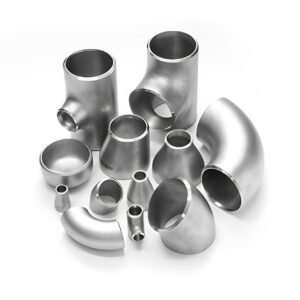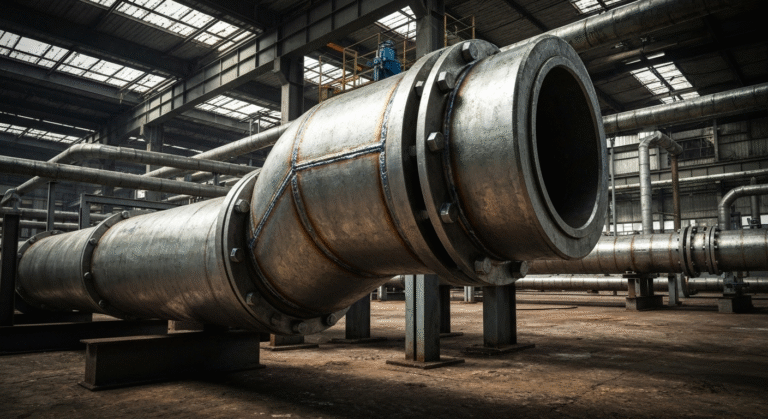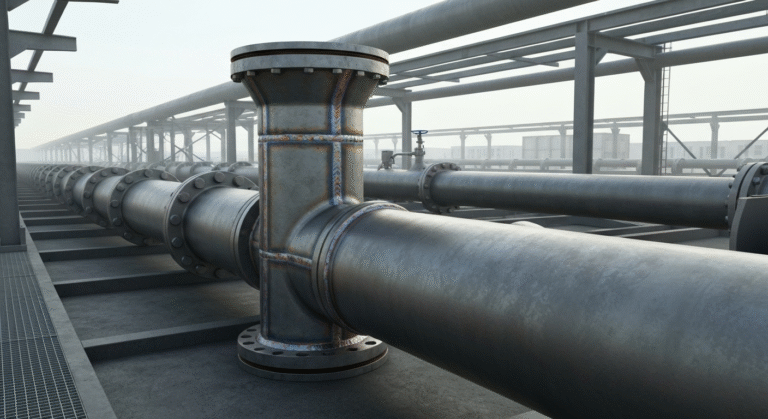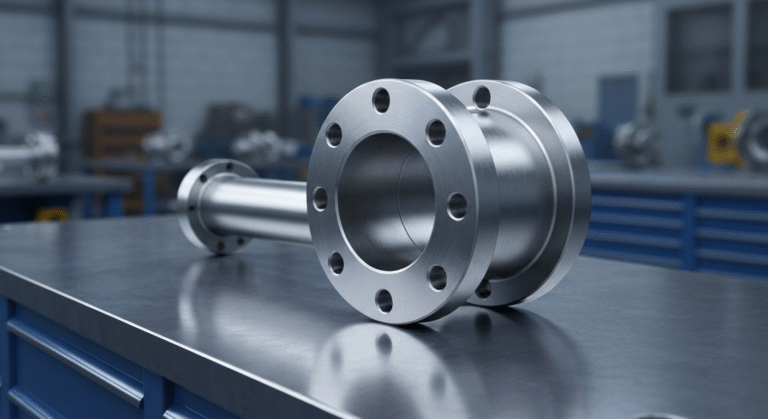-
منطقة ينزوانغ الصناعية، مقاطعة منغكون، مدينة تشانغتشو، مقاطعة خبي، الصين
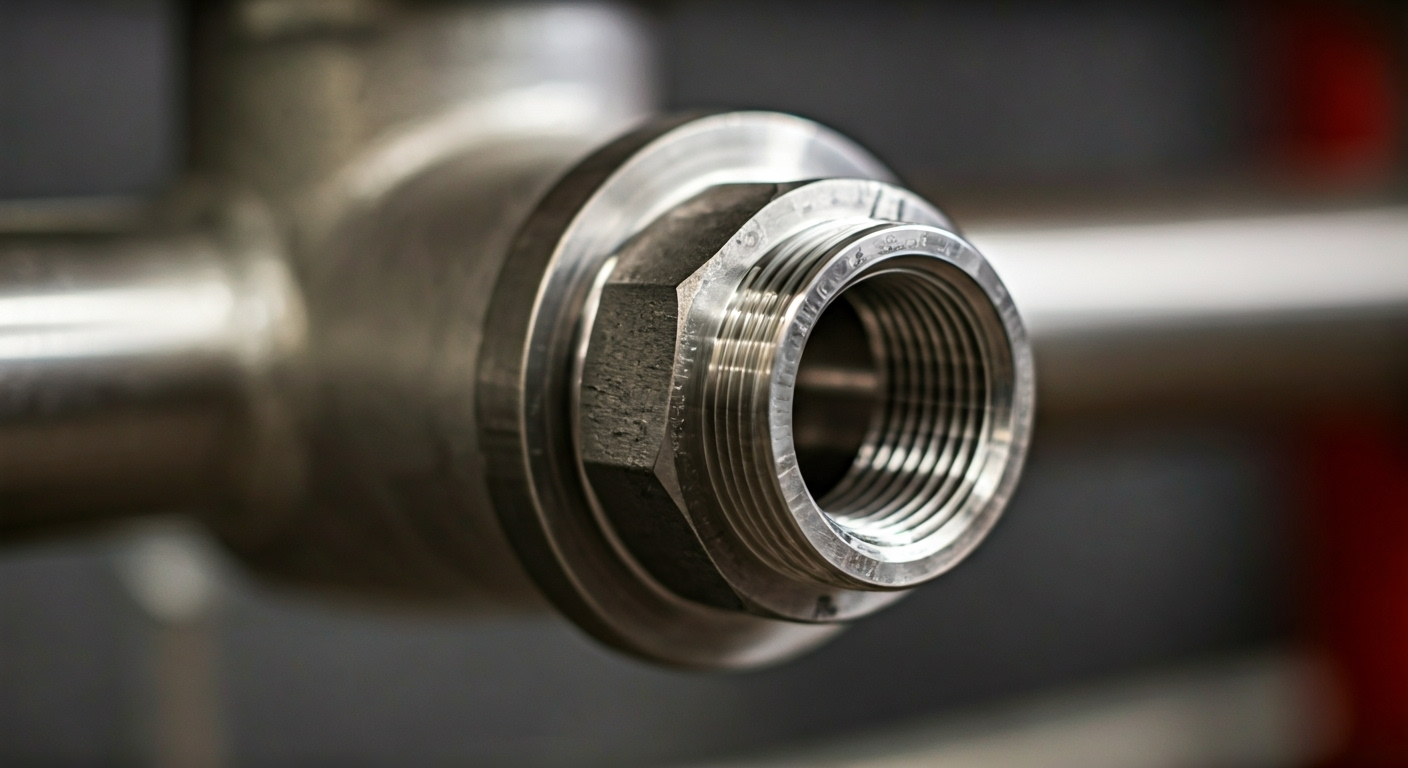
مخفض الفولاذ المقاوم للصدأ: شرح المخفض المركزي مقابل المخفض اللامركزي
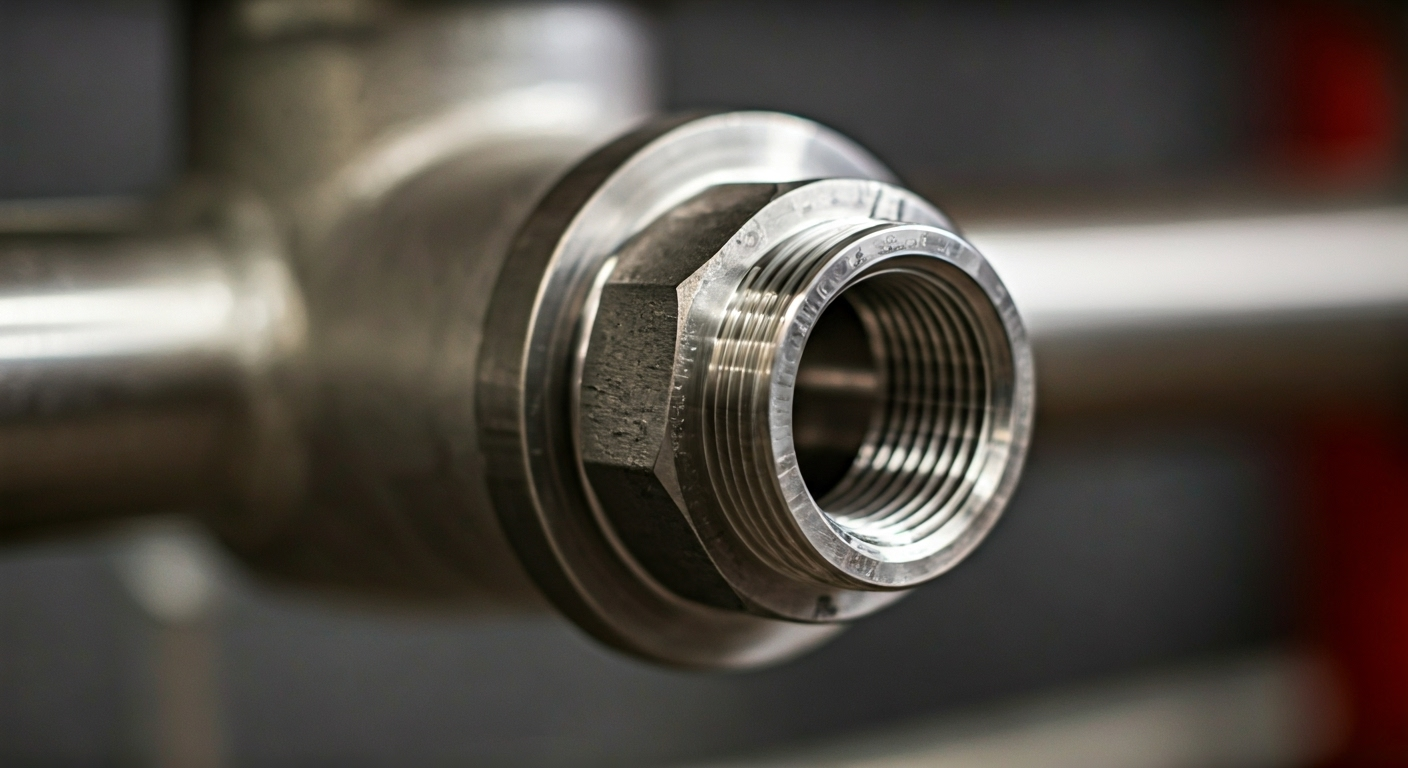
أبرز الملامح الرئيسية
- مخفضات متحدة المركز و مخفضات غريب الأطوار مصنوعة من الفولاذ المقاوم للصدأ. يستخدمها الناس لتوصيل الأنابيب ذات الأقطار المختلفة في نظام الأنابيب.
- مخفضات متحدة المركز تشبه المخروط. فهي تساعد على ربط الخطوط المركزية لأنبوبين.
- المخفضات اللامركزية لها جانب مسطح. وهذا يتأكد من أن الجزء السفلي من الأنبوب يصطف في الاتجاه الصحيح.
- تتحكم هذه المخفضات في التدفق في نظام الأنابيب. كما أنها تساعد في الضغط الصحيح وتحافظ على حركة المواد بشكل صحيح.
- من الجيد استخدام المواد المناسبة وتركيب هذه الأجزاء بشكل جيد للحصول على نظام أنابيب أو نظام شحن قوي.
- يستخدم الناس هذه الأنواع من المخفضات في العديد من الصناعات. يمكنك الحصول عليها لأنابيب PVC، مع شفة أو مع تركيبات خرطوم، بناءً على نوع المخفض الذي تحتاجه.
مقدمة
غالباً ما تحتاج أنظمة الأنابيب إلى توصيل أنابيب بأقطار مختلفة. وفي هذه الحالة مخفضات أنابيب الفولاذ المقاوم للصدأ مفيدة. تساعد هذه التركيبات على توصيل الأنابيب الصغيرة والكبيرة، مما يضمن بقاء تدفق السوائل أو الغازات تحت السيطرة. مخفضات الفولاذ المقاوم للصدأ قوية وتعمل بشكل جيد في العديد من المواقف. هناك نوعان رئيسيان: مخفضات متحدة المركز و مخفضات غريب الأطوار. من المهم اختيار النوع المناسب، حتى يعمل نظام الأنابيب بشكل جيد ولا تواجه مشاكل مثل فقدان الضغط أو تراكم المواد في الداخل. إن معرفة ما يجعل كل نوع مختلفاً عن الآخر يساعد نظام الأنابيب على العمل بشكل أفضل.
الاختلافات الرئيسية بين مخفضات الفولاذ المقاوم للصدأ متحدة المركز وغريب الأطوار
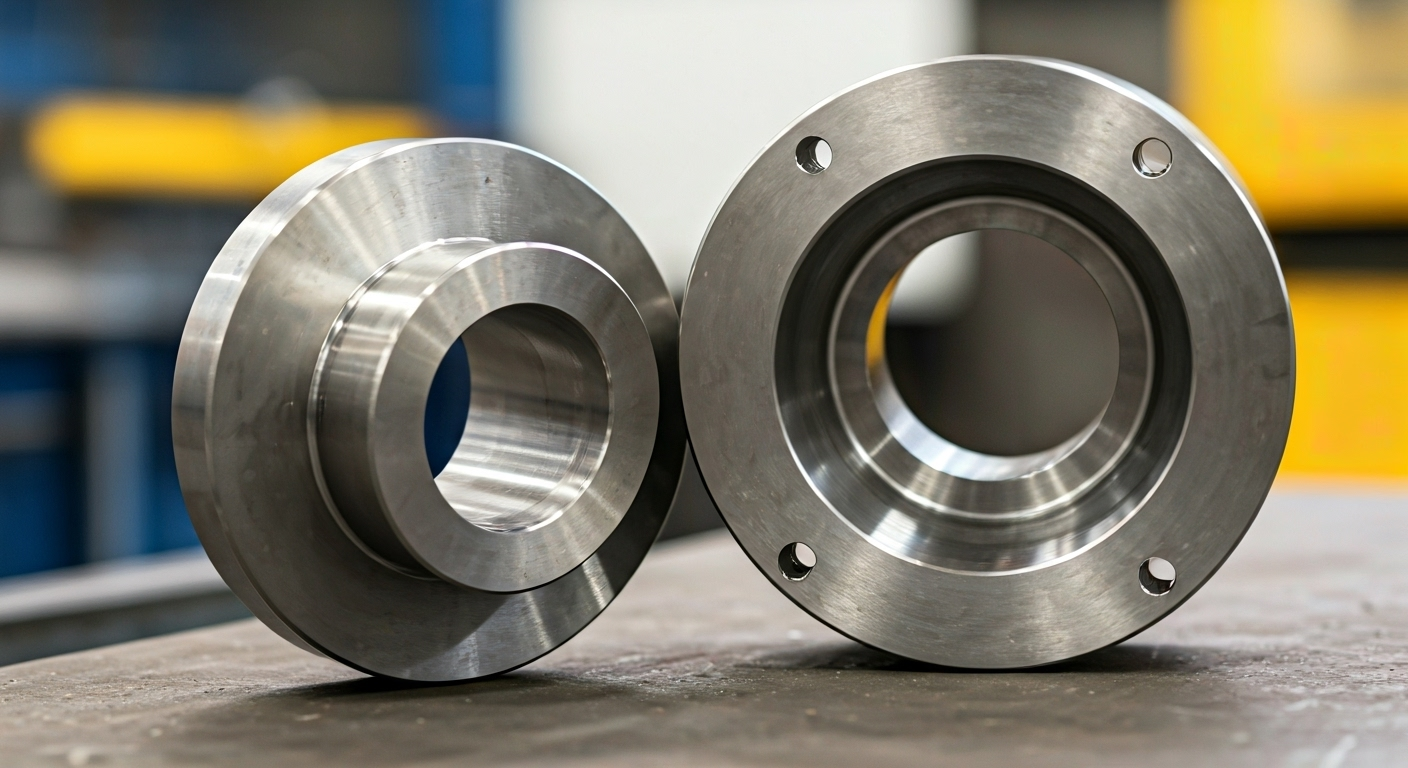
مخفضات متحدة المركز و مخفضات غريب الأطوار كلاهما يربط الأنابيب مع أقطار مختلفة، ولكن الطريقة التي يقومون بها ليست هي نفسها. فـ متحدة المركز نوع يشبه المخروط ويصطف طرفاه في المنتصف. يعمل بشكل أفضل عند استخدامه بشكل عمودي الأنابيب الأنظمة.
على الجانب الآخر مخفضات غريب الأطوار لديك جانب مسطح. وهذا يعني أن الخطوط المركزية للأنابيب لا تتطابق، ويساعد ذلك على بقاء القيعان مصطفة عند استخدامها في المسارات الأفقية.
اختيار المادة المناسبة، مثل الفولاذ المقاوم للصدأيجعل التركيبات تدوم لفترة أطول في العديد من الأماكن. تساعدك هذه الأجزاء على توصيل أنابيب من حجمين بطريقة سلسة. والآن، دعنا نلقي نظرة على الأشكال والتفاصيل الفريدة لكل نوع.
خصائص الشكل والمحاذاة
الفرق الرئيسي بين مخفض متحد المركز و مخفض غريب الأطوار يأتي من الشكل وكيفية اصطفاف الأنابيب. فيما يلي تفصيل سهل:
نوع المخفض | محاذاة خطوط الوسط | الميزات الرئيسية | حالات الاستخدام المفضلة |
|---|---|---|---|
مخفض متحد المركز | تطابق خطوط المنتصف | مخروطي الشكل؛ متماثل | أنظمة الأنابيب العمودية |
مخفض غريب الأطوار | محاذاة الجانب المسطح | قاع مسطح أو أعلى مسطح؛ غير متساوٍ | تطبيقات أفقية؛ تعديل تدفق الغاز/السائل |
A مخفض متحد المركز تصطف الخطوط المركزية لكلا الأنبوبين. هذا الشكل المخروطي والتصميم المتساوي يجعلها جيدة للاستخدام في الأنابيب العمودية، مما يعطي تدفقًا سلسًا من أنبوب بحجم إلى آخر. كما أن مخفض غريب الأطوار لها جانب مسطح، بحيث لا يتطابق كلا الخطين المركزيين. يساعد هذا الجانب المسطح عندما تكون الأنابيب مسطحة، مما يمنع الهواء أو السائل من الاحتباس.
من المهم جدًا وضع مخفض غريب الأطوار في الاتجاه الصحيح، بحيث يكون الجانب المسطح عند الجزء السفلي من الأنبوب. يضمن القيام بذلك بقاء التدفق والضغط متساويين. إذا أخطأت في ذلك، فقد يتسبب ذلك في حدوث انسداد أو إبطاء التدفق. بعد ذلك، دعنا نلقي نظرة على كيفية استخدام كلاهما في الوظائف الحقيقية.
التطبيقات النموذجية في أنظمة الأنابيب
تعد كل من المخفضات متحدة المركز والمخفضات غير المركزية أجزاء مهمة من أنظمة الأنابيب. فهي تعمل لتلبية العديد من الاحتياجات في أنواع مختلفة من الصناعات. تصميماتها الفريدة تعني أنها تستخدم في وظائف مختلفة:
- غالبًا ما تستخدم المخفضات متحدة المركز لتوصيل الأنابيب الرأسية. وهي تساعد عند التعامل مع ضغط السوائل في العديد من الصناعات.
- تساعد المخفضات اللامتراكزة على إبقاء الجزء السفلي من الأنبوب الأفقي مسطحاً. وهذا يمنع الهواء أو الغاز من التراكم والتسبب في مشاكل.
أثناء الشحن، يتيح لك المخفض توصيل أشياء مثل الفلنجات أو المحملات أو الخراطيم ذات الأقطار المختلفة. وهذا يحافظ على عمل كل شيء معًا بشكل جيد. على سبيل المثال، استخدام مخفض PVC يمكن أن يجعل تركيبات النظام بسيطة. تعتبر التركيبات الفولاذية، مثل تلك المصنوعة من سبائك الفولاذ المقاوم للصدأ، جيدة إذا كنت تريد نتائج تدوم طويلاً.
يمكنك أن ترى استخدام كلا النوعين من المخفضات بدءًا من أعمال السباكة المنزلية وحتى الآلات الكبيرة في الصناعات. فهي تساعد في جعل أنظمة الأنابيب تعمل بشكل أفضل بغض النظر عن حجمها الكبير أو الصغير. ومع ذلك، يأتي السؤال الذي يطرح نفسه - كيف تختار النوع المناسب؟ دعونا نجمع ما تعلمناه حتى الآن.
الخاتمة
باختصار، من المهم معرفة الفروق بين مخفضات الفولاذ المقاوم للصدأ متحدة المركز ومخفضات الفولاذ المقاوم للصدأ غير المركزية عند تصميم نظام أنابيب. فكل مخفض مصنوع لاستخدام خاص. يمكن للمخفض الذي تختاره أن يساعد نظام الأنابيب الخاص بك على العمل بشكل أفضل، بناءً على الطريقة التي تريد أن تصطف بها الأشياء وكيف تريد أن يتحرك التدفق. عندما تفكر في الشكل، ومحاذاة الأنابيب، ومكان استخدامها عادة، ستتمكن من اختيار المخفض المناسب لجعل مشروعك يعمل بسلاسة. إذا لم تكن متأكدًا من مخفض الفولاذ المقاوم للصدأ الذي يناسب احتياجاتك، يمكنك دائمًا طلب المساعدة من أحد الخبراء.
Product Type
The type of product significantly influences the functioning and efficiency of piping systems. Various configurations of stainless steel reducers, including concentric and eccentric models, serve distinct purposes based on their shape and alignment characteristics. Concentric reducers maintain a uniform centerline, ideal for applications where a smooth transition is crucial. In contrast, eccentric reducers feature a flat side, facilitating alignment with the bottom of the pipe, which helps reduce issues such as cavitation and allows for effective drainage in pipelines.
Country of Origin
The country of origin significantly impacts the quality and standards of stainless steel reducers. Manufacturers from regions known for advanced metallurgy often produce fittings that align with international specifications. Countries such as the United States, Germany, and Japan have established themselves as leaders in producing high-grade stainless steel products. This reliability not only ensures durability but also reduces potential issues such as cavitation in piping systems. When selecting a reducer, prioritizing origin can provide assurance regarding performance and longevity.
المواد
Material selection plays a crucial role in the performance of reducers in piping systems. Stainless steel, highly favored for its durability, resistance to corrosion, and ability to withstand high pressures, is the prime choice for both concentric and eccentric reducers. The choice of alloy, such as 304 or 316, can greatly affect functionality—304 provides general corrosion resistance while 316 offers enhanced performance in harsher environments. Understanding these material differences helps ensure optimal alignment and longevity in piping applications.
الجدول الزمني
In piping systems, the schedule of a stainless steel reducer denotes the wall thickness and weight, influencing its strength and pressure capacity. Schedule 10 models are typically lighter and suitable for low-pressure applications, while schedule 80 reducers are more robust, accommodating higher pressure conditions. This distinction plays a crucial role when selecting fittings for specific tasks, ensuring that the piping can withstand the intended operational demands without the risk of cavitation or failures. Proper alignment with the schedule specifications guarantees efficient flow and performance.
الحجم
Size plays a crucial role in determining the efficacy of a reducer in a piping system. Different diameters must be accurately chosen to ensure optimal flow within each fitting. Selecting a reducer that perfectly matches the pipeline’s dimensions prevents cavitation, reduces turbulence, and maintains system integrity. For instance, a correctly sized concentric reducer allows for a seamless shift in diameter, minimizing flow disruptions. Whether working with PVC or stainless steel, precise measurements ensure highly efficient and reliable performance throughout the system.
¾ x ½ inch 304 Stainless Steel schedule 10 eccentric reducers
Featuring a ¾ x ½ inch specification, these 304 stainless steel schedule 10 eccentric reducers are engineered for seamless transitions within piping systems. The design incorporates a flat side that aligns perfectly with the bottom of the pipe, facilitating effective flow management between different diameters. Ideal for applications where space constraints exist, this reducer minimizes cavitation risks and enhances overall system performance, making it a reliable choice for both industrial and commercial environments.
¾ x ½ inch 304 Stainless Steel schedule 80 eccentric reducer
This ¾ x ½ inch 304 stainless steel schedule 80 eccentric reducer is designed to accommodate variations in piping systems, facilitating smooth transitions for different diameters. Characterized by its flat side, it ensures minimal disruption to flow, allowing for effective management of pressure and cavitation concerns. Essential for applications where alignment with the bottom of the pipe is crucial, this fitting is both durable and resilient, suitable for various industries relying on sized pipe reducers for optimal performance in their systems.
¾ x ½ inch 316 Stainless Steel schedule 10 eccentric reducers
Eccentric reducers measuring ¾ x ½ inch in 316 stainless steel provide a unique solution for various piping applications. Designed with a flat side, these fittings effectively manage flow transitions between different diameters, minimizing turbulence and potential cavitation. Their compatible schedule 10 configuration ensures durability and resistance to corrosion, making them ideal for both industrial and commercial use. When incorporated into a piping system, they maintain the centerline alignment, promoting efficient fluid movement and enhancing overall system performance.
¾ x ½ inch 316 Stainless Steel schedule 80 eccentric reducer
The ¾ x ½ inch 316 stainless steel schedule 80 eccentric reducer is a critical component in many piping systems, designed to accommodate varying diameters without significant pressure loss. The eccentric design ensures that the flat side aligns at the bottom of the pipe, promoting better flow characteristics and reducing the risk of cavitation. This fitting is particularly suitable for applications requiring durability against corrosion while facilitating seamless transitions between pipes, enhancing overall efficiency in the system.
¾ x ½ inch carbon steel schedule 80 eccentric reducer
The ¾ x ½ inch carbon steel schedule 80 eccentric reducer is designed for efficient flow transition between differing pipe diameters. With its flat side positioned at the bottom of the pipe, this fitting promotes optimal alignment within piping systems, minimizing potential cavitation issues. Ideal for various applications, it accommodates diverse configurations, ensuring smooth connectivity. The robust construction of this eccentric reducer offers durability, crucial for high-pressure environments, making it a reliable choice for industrial piping needs.
¾ x ½ inch schedule 40 carbon steel eccentric reducer
Engineered for optimal performance, the ¾ x ½ inch schedule 40 carbon steel eccentric reducer is a vital component in various piping systems. This fitting effectively accommodates changes in pipe diameter, allowing for smooth transitions while maintaining fluid dynamics. Often found at the bottom of the pipe in configurations requiring precise flow management, its flat side ensures proper alignment for installation. When integrated with other fittings, such as tees and flanges, it minimizes cavitation risks, enhancing the durability of the overall system.
¾ x ½ Schedule 40 304 Stainless Steel Eccentric reducers
Ideal for fluid systems that require precise flow control, the ¾ x ½ inch Schedule 40 304 stainless steel eccentric reducer accommodates varying diameters without compromising performance. This fitting’s unique design features a flat side that aligns with the bottom of the pipe, effectively minimizing cavitation and turbulence. The reducer’s robust construction ensures durability, making it suitable for a range of applications. Additionally, its rust-resistant properties enhance longevity, seamlessly fitting into both industrial and commercial piping systems.
¾ x ½ Schedule 40 316 Stainless Steel Eccentric reducers
¾ x ½ Schedule 40 316 stainless steel eccentric reducers are designed for efficient flow transition between pipes of different diameters within various piping systems. With an offset centerline, these reducers help minimize potential issues like cavitation and turbulence. The flat side arrangement allows for easier alignment with existing infrastructure. Ideal for applications requiring durability and corrosion resistance, these fittings are perfect for industries ranging from manufacturing to construction, ensuring reliable performance in demanding environments.
1 ¼ x ½ inch carbon steel schedule 80 eccentric reducer
Designed for efficient flow management, the 1 ¼ x ½ inch carbon steel schedule 80 eccentric reducer is essential in various piping systems. With its unique shape, the flat side aligns with the bottom of the pipe, helping maintain the center line and reducing the risk of cavitation. This fitting is ideal for applications requiring a seamless transition between different diameters while effectively managing pressure loss. Its robust construction ensures durability and reliability in demanding environments.
1 ¼ x ½ inch schedule 40 carbon steel eccentric reducer
Designed for efficient flow in piping systems, the 1 ¼ x ½ inch schedule 40 carbon steel eccentric reducer effectively transitions from larger to smaller diameters. By aligning the flat side at the bottom of the pipe, this fitting minimizes cavitation, ensuring smoother fluid dynamics. Commonly used in various industrial applications, its robust construction with carbon steel guarantees enhanced strength and durability. This reducer is essential for creating a reliable and consistent flow path in both commercial and residential setups.
1 ¼ x ¾ inch 304 Stainless Steel schedule 10 eccentric reducers
Eccentric reducers in a size of 1 ¼ x ¾ inch, crafted from 304 stainless steel, are essential for enhancing flow efficiency in piping systems. These fittings feature a unique design that allows for smoother transitions between different diameters, preventing issues like cavitation. The flat side aligns at the bottom of the pipe, ensuring stable installations. With their schedule 10 rating, these eccentric reducers provide durability while facilitating effective liquid and gas transportation across various applications.
1 ¼ x ¾ inch schedule 40 carbon steel eccentric reducer
Featuring a 1 ¼ x ¾ inch dimension, the schedule 40 carbon steel eccentric reducer is designed to facilitate seamless transitions between pipes of different diameters without disrupting flow dynamics. With its flat side, this fitting effectively aligns with the bottom of the piping system, ensuring efficient transportation of liquids or gases. Commonly utilized in various industrial applications, the reducer aids in minimizing cavitation while maintaining desired pressure levels, proving essential for optimal system performance and reliability.
1 ¼ x 1 inch 304 Stainless Steel schedule 10 eccentric reducers
Eccentric reducers in the 1 ¼ x 1 inch size are designed specifically for schedule 10 applications. Crafted from high-quality 304 stainless steel, they offer excellent resistance to corrosion and high temperatures, ensuring durability in various piping systems. The unique geometry maintains centerlines effectively, which mitigates issues like cavitation and flow disruption. Ideal for transitioning between different diameters, these reducers fit seamlessly into existing setups, providing reliable connectivity, whether in industrial or commercial environments. Their flat side orientation allows for optimal alignment with the bottom of the pipe.
1 ¼ x 1 inch 316 Stainless Steel schedule 10 eccentric reducers
Crafted from durable 316 stainless steel, the 1 ¼ x 1 inch schedule 10 eccentric reducers are designed for efficient flow management within various piping systems. These reducers accommodate different diameters, maintaining consistent centerlines and minimizing cavitation risks. The flat side aligns with the bottom of the pipe, optimizing space utilization and ensuring seamless connections. Ideal for both industrial and commercial applications, they combine strength and functionality, making them a reliable choice for your piping needs.
1 ¼ x 1 inch carbon steel schedule 80 eccentric reducer
With a 1 ¼ x 1 inch carbon steel schedule 80 eccentric reducer, efficient transition between different diameters is achieved while minimizing flow disturbances. This fitting’s unique design allows for a seamless connection within piping systems, effectively directing the liquid flow towards the bottom of the pipe. The flat side design enhances stability, making it highly effective in applications where vertical alignment is crucial. These reducers are often employed in industrial settings, contributing to overall system performance without compromising durability.
1 ¼ x 1 inch schedule 40 carbon steel eccentric reducer
Designed for optimal efficiency in fluid transfer, the 1 ¼ x 1 inch schedule 40 carbon steel eccentric reducer accommodates varying diameters within piping systems. Featuring a flat side that aligns with the bottom of the pipe, this fitting ensures a smooth transition and minimizes risk of cavitation. Its robust structure contributes to durability, making it ideal for demanding applications. This reducer integrates seamlessly with other components, such as tees and sockets, enhancing overall system performance in both residential and industrial settings.
Pipe Fittings Direct
Essential for maintaining the integrity of piping systems, Pipe Fittings Direct offers a vast selection of stainless steel reducers, including eccentric and concentric variations. Their product lineup seamlessly accommodates different diameters, ensuring optimal flow and performance. By focusing on quality and reliability, they provide fittings crafted to minimize cavitation and enhance overall efficiency. With convenient shipping options and various flange types available, you can easily find the right reducer to meet your specific application needs.
الأسئلة الشائعة
What is the main function of a stainless steel reducer?
A stainless steel pipe reducer is used to join two pipes that have different diameters. It helps make sure the flow and pressure in the piping system stay steady. The reducer lets you change the size of the piping without hurting the fitting’s strength or how well it works. This keeps the whole piping system running well.
How do I choose between a concentric and an eccentric reducer?
For vertical pipelines, it is best to use a concentric reducer. This keeps the centerline in line. In a horizontal line, use an eccentric reducer. The flat side of this reducer should be at the bottom of the pipe. This way, material will not collect there. You need to think about how the flow works in your system and know the diameters to make a good choice.
Are there specific industries that prefer one type over the other?
Yes, different industries can want different things. Eccentric reducers work well in pipelines that carry liquid or gas. They are good to use when there are many tees and flanges in the piping. Concentric reducers are mostly used in vertical piping jobs. People pick them because of their stainless steel strength and how they keep the centerline straight.
How does installation differ for concentric vs. eccentric reducers?
Concentric reducers are easy to put in place because you only need to line up the center lines. Eccentric reducers are different. You have to be careful with the flat side when you install them. You can place the flat side either up or down, but the flat side on the bottom of the pipe helps stop problems like cavitation or things getting trapped in horizontal systems.
Do concentric and eccentric reducers affect flow rates differently?
نعم، تساعد المخفضات متحدة المركز في الحفاظ على تدفق ثابت في نظام الأنابيب الرأسي. المخفضات اللامركزية ليست هي نفسها. فهي تقلل من خطر التجويف عندما يتغير القطر في الأنابيب الأفقية. وهذا يحافظ على ثبات التدفق في نظام الأنابيب. إن اختيار المخفض المناسب يمكن أن يوقف المشاكل في عمل الأنابيب ويقلل من عدم الكفاءة.
